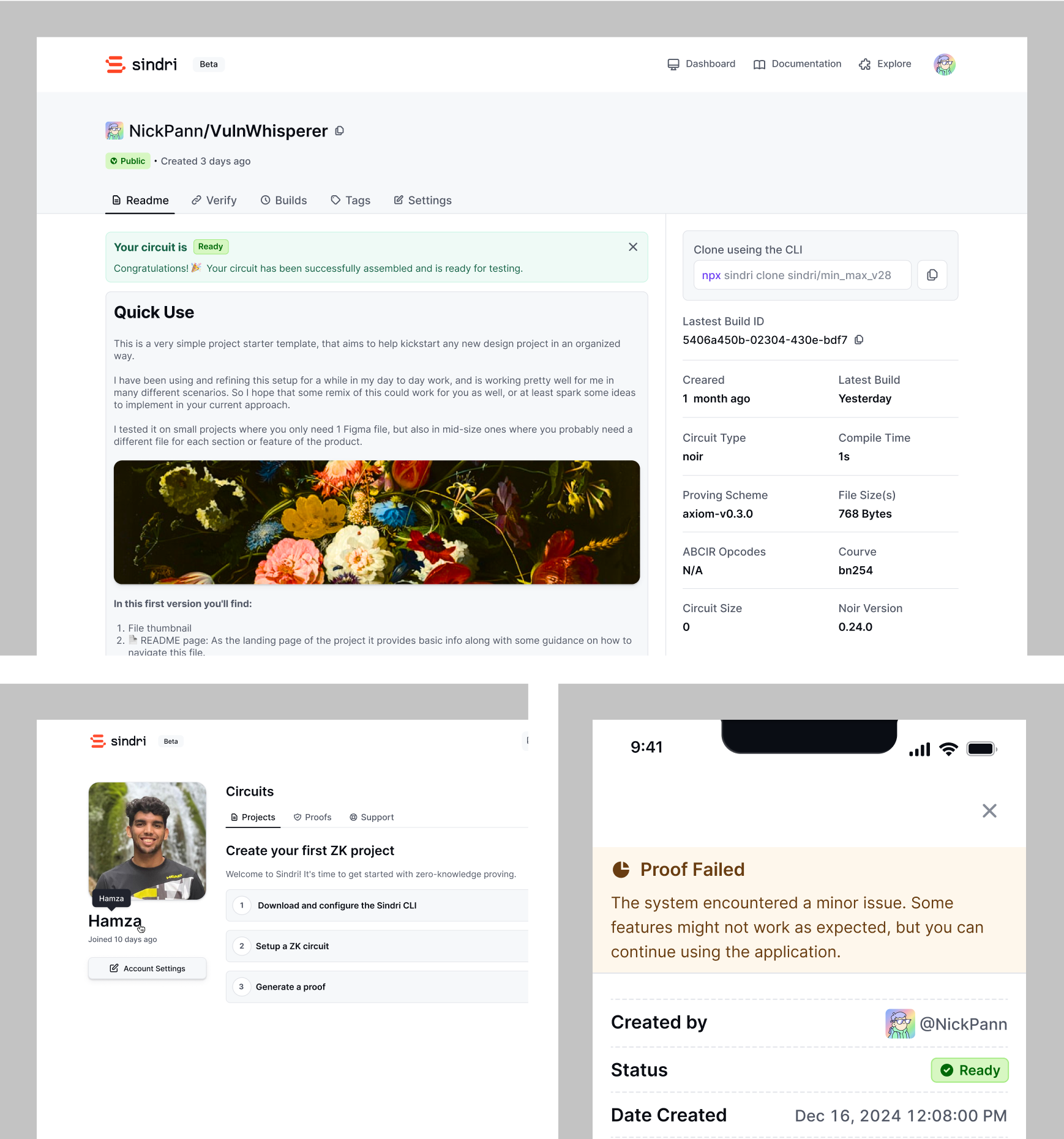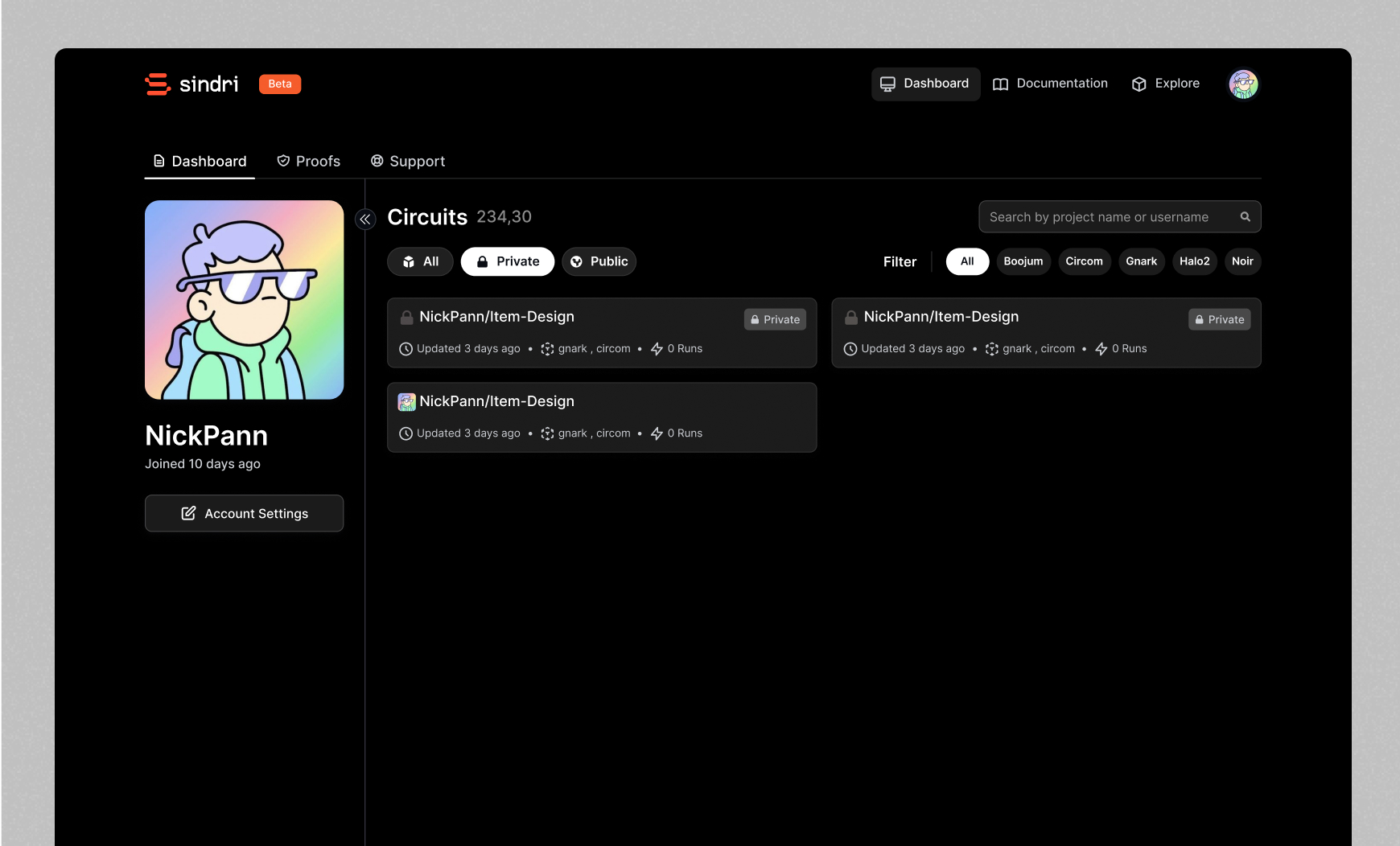The Vision
Sindri didn't come to us asking for a redesign. They came to us with something deeper and more challenging. They had built a powerful zero-knowledge infrastructure platform, capable of generating and managing proofs at scale with impressive technical capabilities.
Their technology was solid, their backend was fast, but what they didn't have was a product that developers could actually see, feel, or use without friction.
Everything lived in a command-line interface with no onboarding, no visual feedback, and no clear guidance when something failed. It worked, but only if you already knew exactly what you were doing. Most developers didn't, and the learning curve was steep enough to prevent adoption.
That's where we stepped in to bridge the gap between powerful technology and usable product.
The core challenge wasn't technical—it was experiential. We needed to make one of the most complex areas of blockchain technology feel approachable, trustworthy, and intuitive for developers who were already dealing with enough complexity in their daily work.
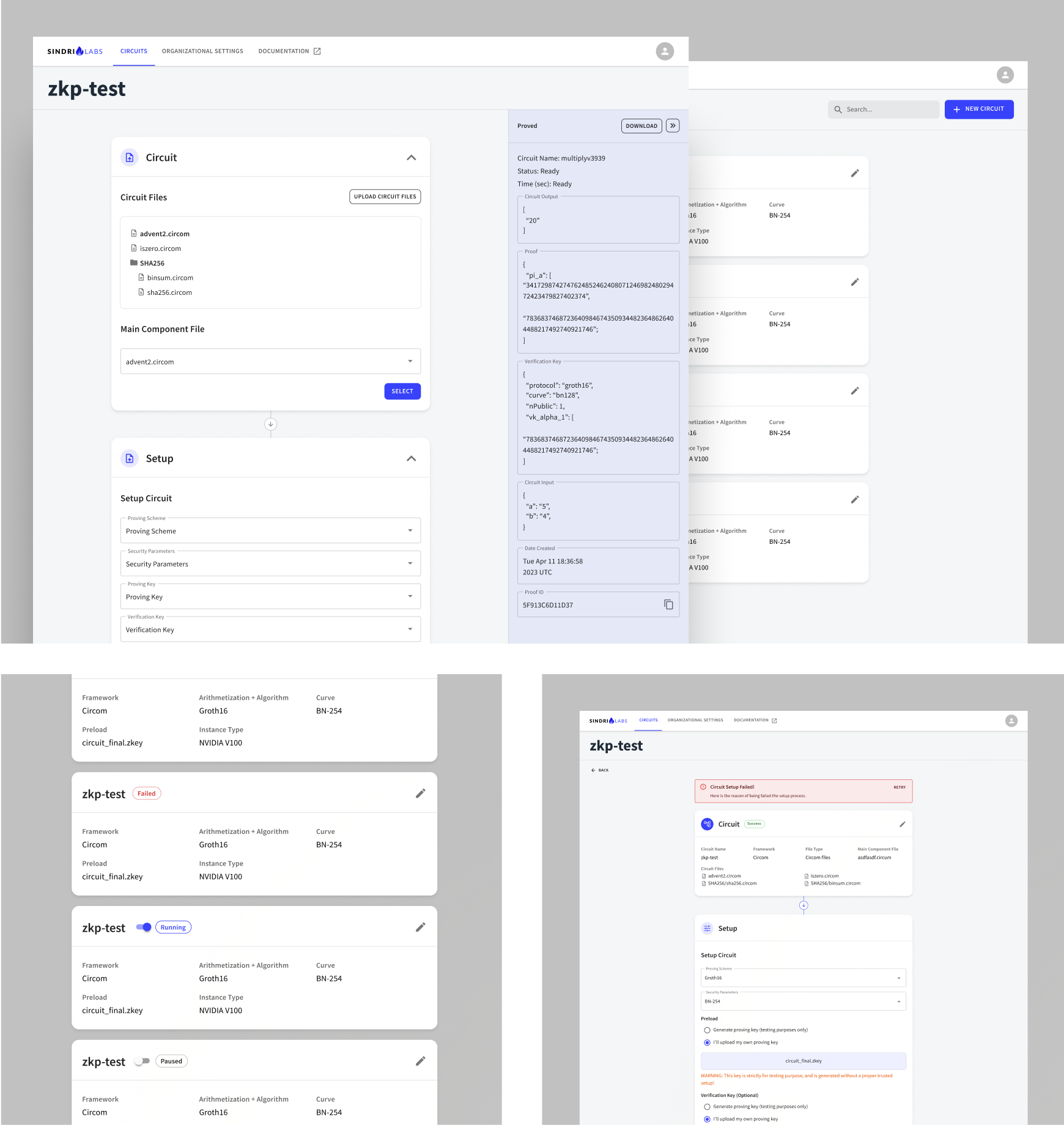
Research & Discovery
Before we opened Figma or sketched our first wireframe, we invested significant time in understanding the problem space.
We spoke extensively with Sindri's early adopters and core team members, diving deep into user feedback and pain points. We explored the broader zero-knowledge ecosystem and reviewed what competing platforms like zkSync, Scroll, and Polygon CDK were offering their users.
A clear pattern emerged from our research. Every platform in the space made powerful technical promises, but they all left users with the same fundamental feeling of uncertainty and lack of control. Developers consistently reported the same frustrations across different platforms.
The feedback was remarkably consistent. Developers didn't know when something was actually working versus when it had failed silently. They couldn't understand what went wrong when processes failed, making debugging nearly impossible. Most importantly, they didn't feel like they were in control of their infrastructure, which created anxiety around production deployments.
This insight gave us our design direction and core principles. This wasn't just about simplifying a user interface or making things look prettier. It was about giving developers the clarity, ownership, and peace of mind they needed to trust the platform with their critical infrastructure needs.
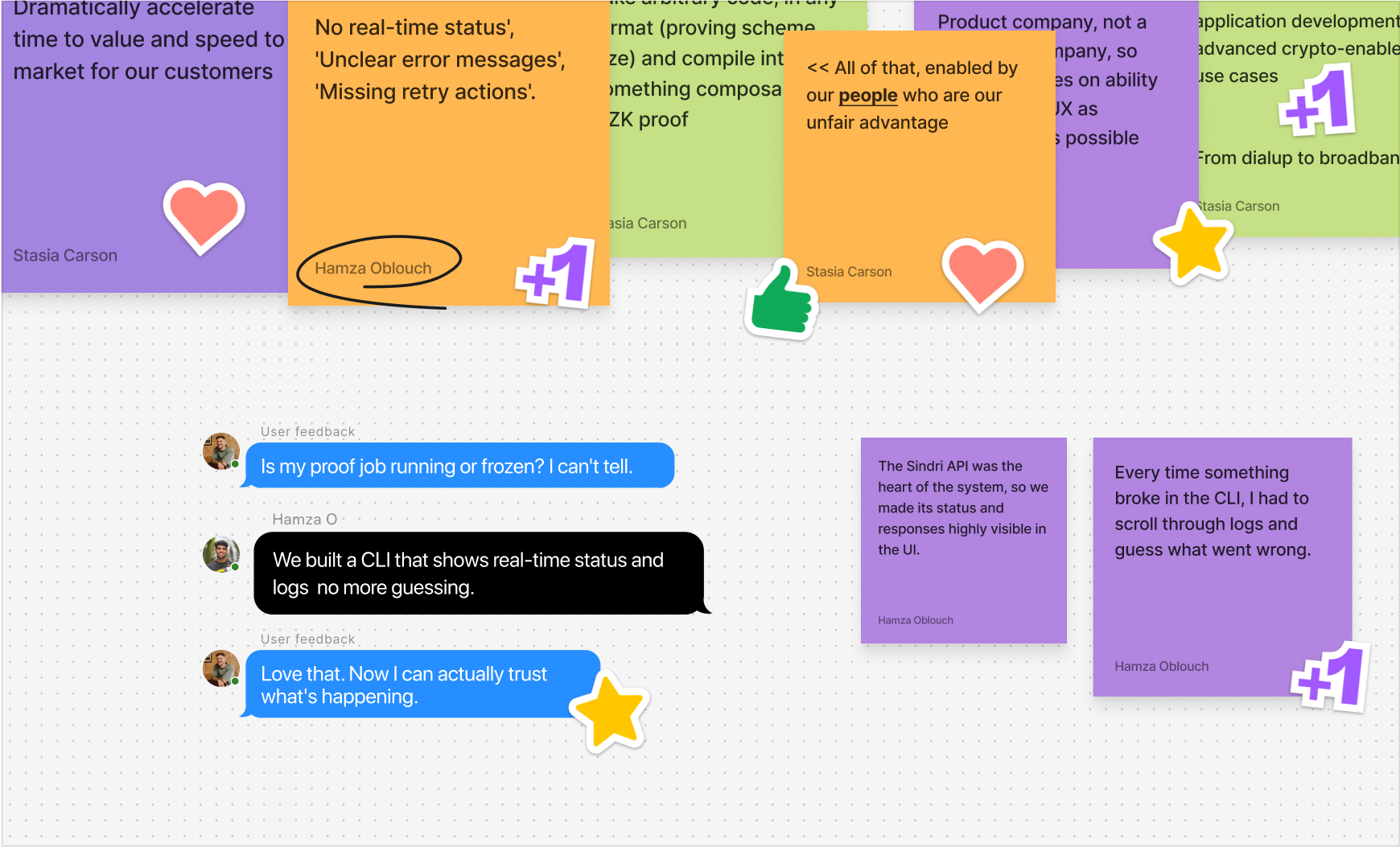
Design Strategy
Our design strategy centered on transforming uncertainty into confidence through every interaction. We built a comprehensive CLI experience with real-time status updates, progress indicators, and human-readable error messages that actually helped developers understand and resolve issues quickly.
The responsive dashboard became the centerpiece of our solution, designed as a live control panel where developers could watch proofs in motion, track infrastructure health in real-time, view detailed logs, and understand exactly what was happening under the hood at any moment. Every screen was designed with surgical focus and intentional simplicity.
We eliminated visual noise and unnecessary graphics, instead creating clean and functional interfaces that gave developers the confidence they needed to rely on the platform for production workloads. The design language prioritized clarity over cleverness, ensuring that every element served a specific purpose in the user's workflow.
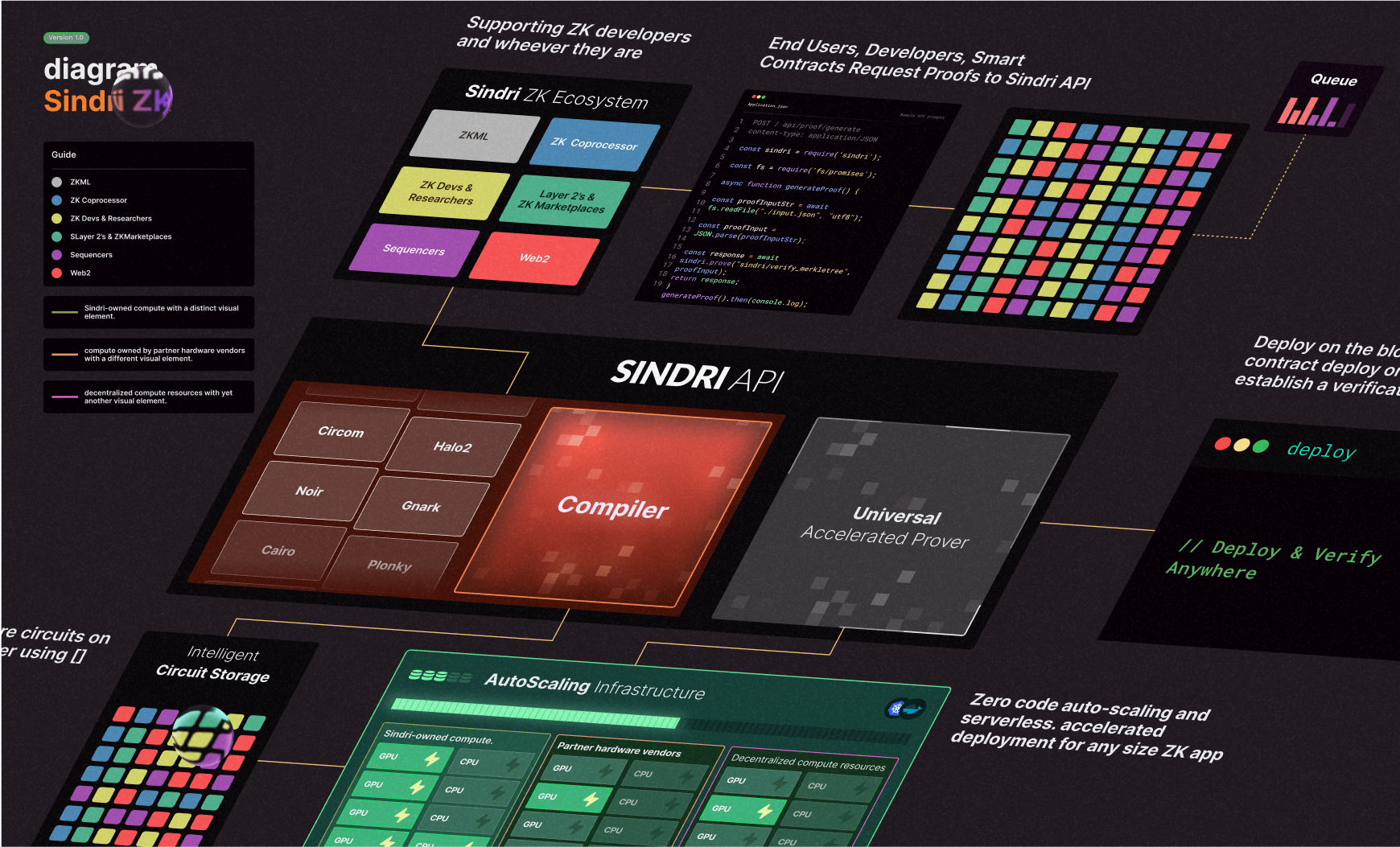
Research & Discovery
Before we opened Figma or sketched our first wireframe, we invested significant time in understanding the problem space.
We spoke extensively with Sindri's early adopters and core team members, diving deep into user feedback and pain points. We explored the broader zero-knowledge ecosystem and reviewed what competing platforms like zkSync, Scroll, and Polygon CDK were offering their users.
A clear pattern emerged from our research. Every platform in the space made powerful technical promises, but they all left users with the same fundamental feeling of uncertainty and lack of control. Developers consistently reported the same frustrations across different platforms.
The feedback was remarkably consistent. Developers didn't know when something was actually working versus when it had failed silently. They couldn't understand what went wrong when processes failed, making debugging nearly impossible. Most importantly, they didn't feel like they were in control of their infrastructure, which created anxiety around production deployments.
This insight gave us our design direction and core principles. This wasn't just about simplifying a user interface or making things look prettier. It was about giving developers the clarity, ownership, and peace of mind they needed to trust the platform with their critical infrastructure needs.
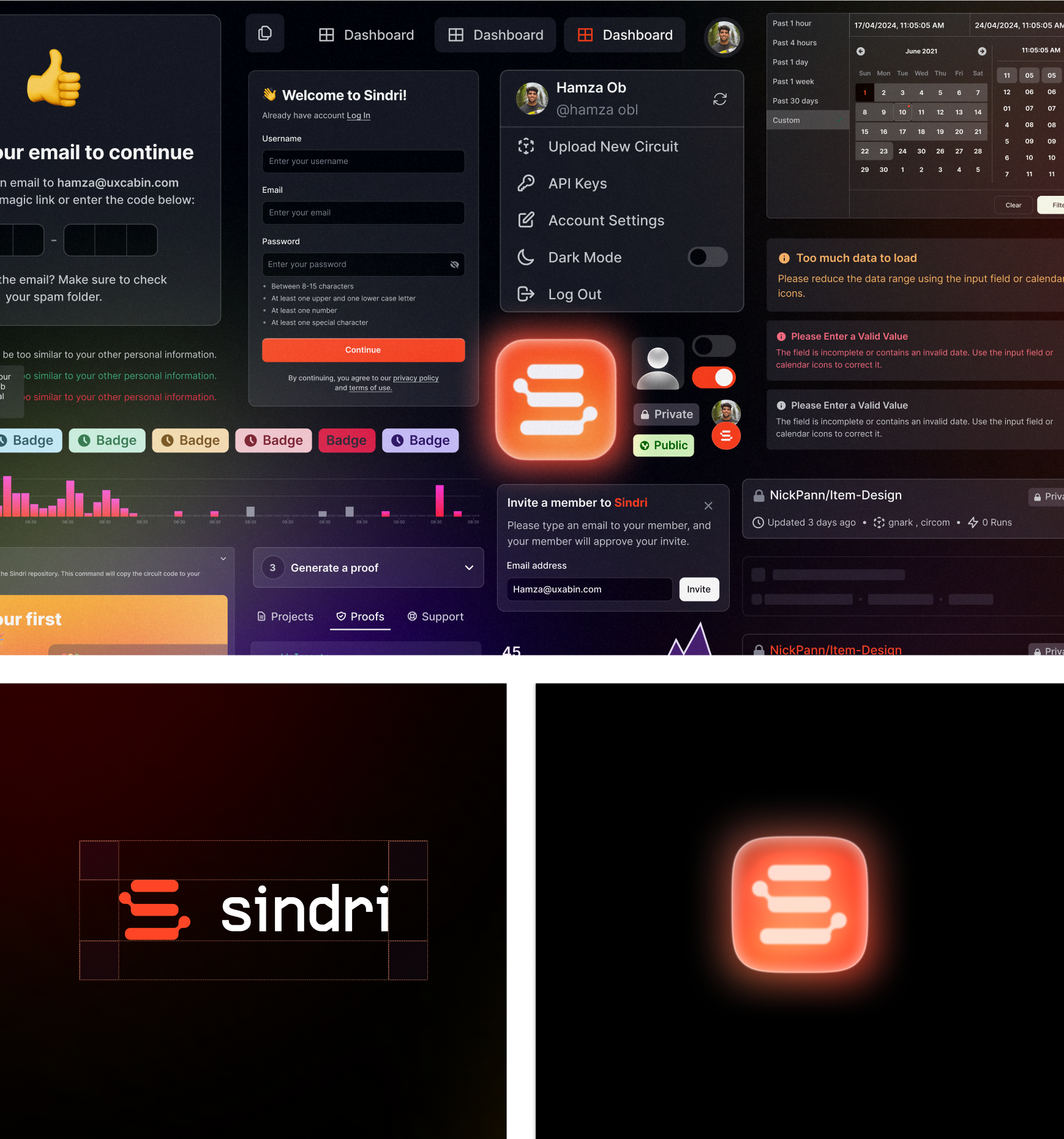
Technical Foundation
As we developed the interface design, we simultaneously built a robust foundation to support future growth and feature development. We created a comprehensive design system in Figma with every component, design token, layout rule, and spacing variable carefully structured to support new features without requiring fundamental redesigns.
The system was designed to work seamlessly in both light and dark modes, recognizing that developer preferences vary widely and often change based on working conditions. Every layout was optimized across desktop, tablet, and mobile breakpoints, ensuring that developers could access critical information and controls regardless of their device or working environment.
This wasn't simply a handoff file or style guide. It was a living foundation that the Sindri team could build upon as the product evolved, expanded, and attracted new types of users with different needs and expectations.
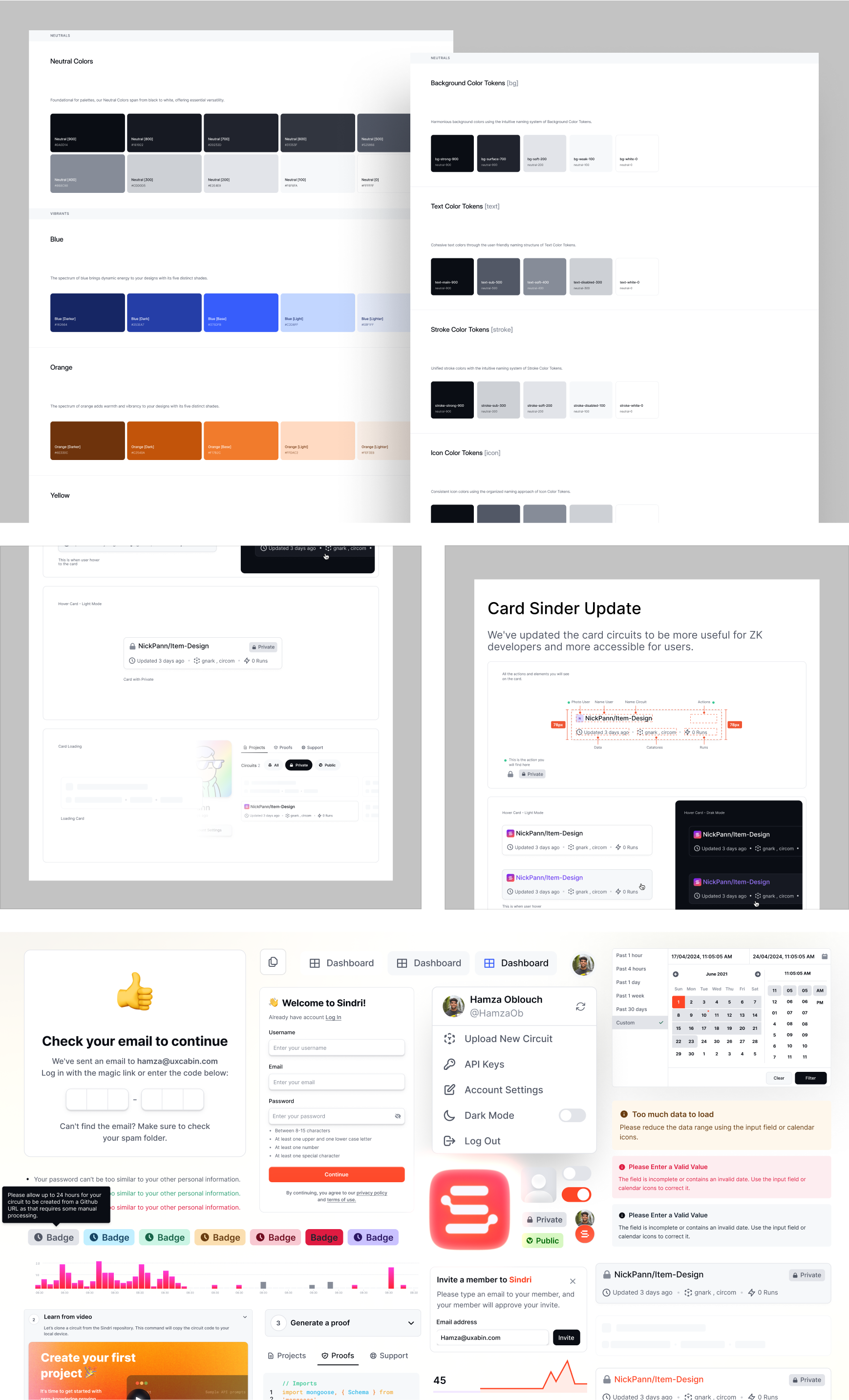
Visual Design System
Sindri didn't want to look like another crypto startup riding on hype and speculation. They needed to communicate trust, reliability, and technical sophistication to developers who valued substance over style. We crafted a brand identity that felt modern but restrained, professional but approachable.
The color palette was deliberately cool and technical, conveying stability and precision. Typography choices emphasized clarity and readability across different contexts and screen sizes. Every visual element was designed to feel intentional and purposeful, never overdesigned or attention-seeking for its own sake.
The resulting brand position communicated exactly what Sindri was: a serious infrastructure tool built for serious developers who needed reliable, scalable zero-knowledge proof generation without the typical crypto marketing noise.

Testing & Validation
We conducted extensive testing with real developers throughout the design process. Users worked through the redesigned CLI, explored the dashboard interface, triggered proof jobs, and navigated circuit management workflows. The feedback transformation was remarkable and immediate.
Confusion transformed into clarity as users could finally understand what the system was doing. Guessing became confident decision-making as status information became clear and actionable. Frustration turned into trust as error messages became helpful rather than cryptic.
This shift in user experience wasn't just internal validation. The market responded immediately and decisively to the redesigned platform when Sindri launched publicly.
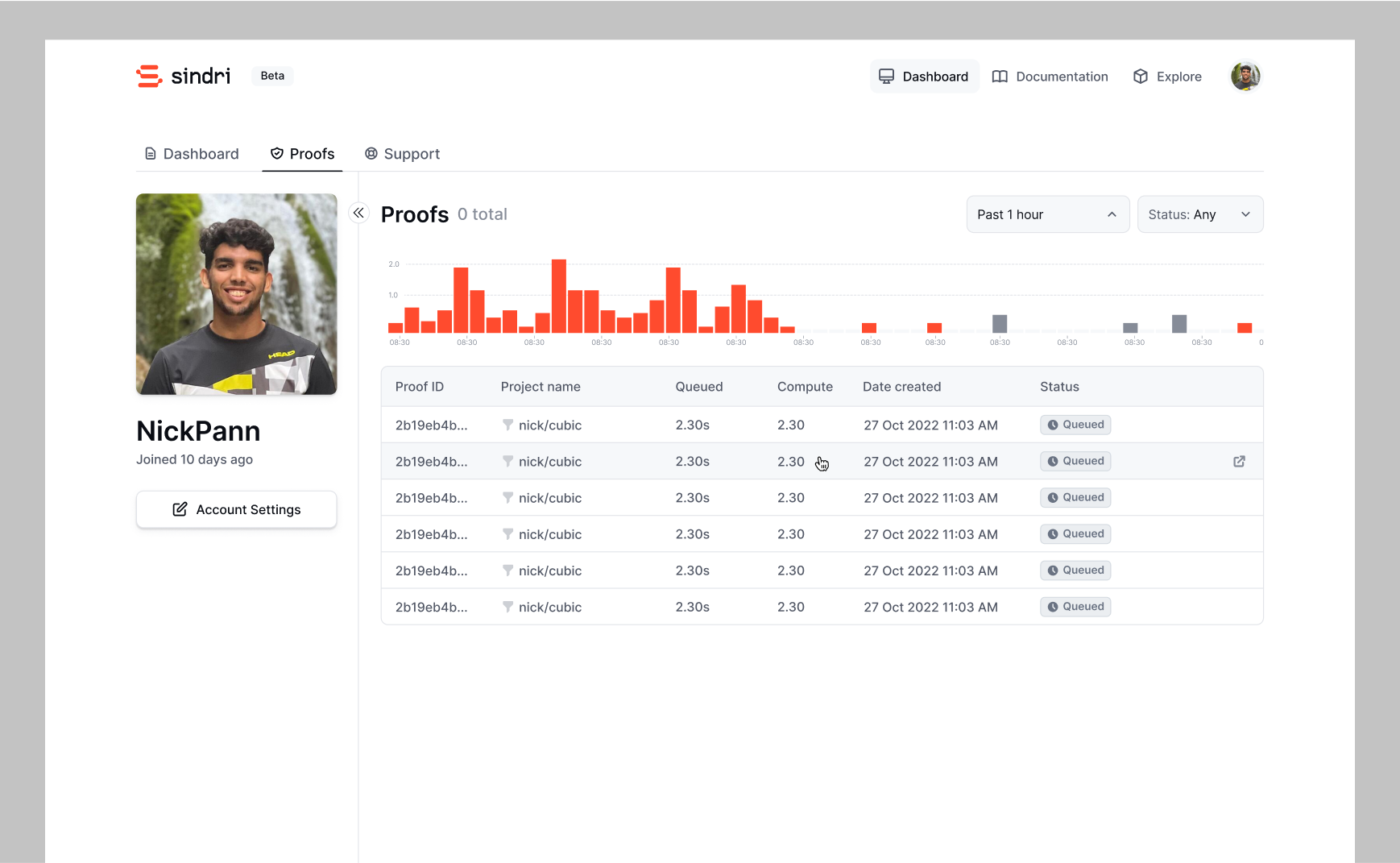
Results & Impact
Sindri launched the redesigned platform and quickly gained significant traction in the competitive zero-knowledge infrastructure space. Within weeks of launch, they successfully raised five million dollars in seed funding, led by CoinFund, one of the most respected investors in the blockchain infrastructure space.
Investors specifically highlighted the platform's user experience design and overall product maturity as key factors in their investment decision. The design work had transformed a powerful but inaccessible technology into a product that felt ready for enterprise adoption and scaled deployment.
The product didn't just work from a technical standpoint—it felt ready for serious production use by development teams who needed reliable infrastructure they could trust with critical applications.
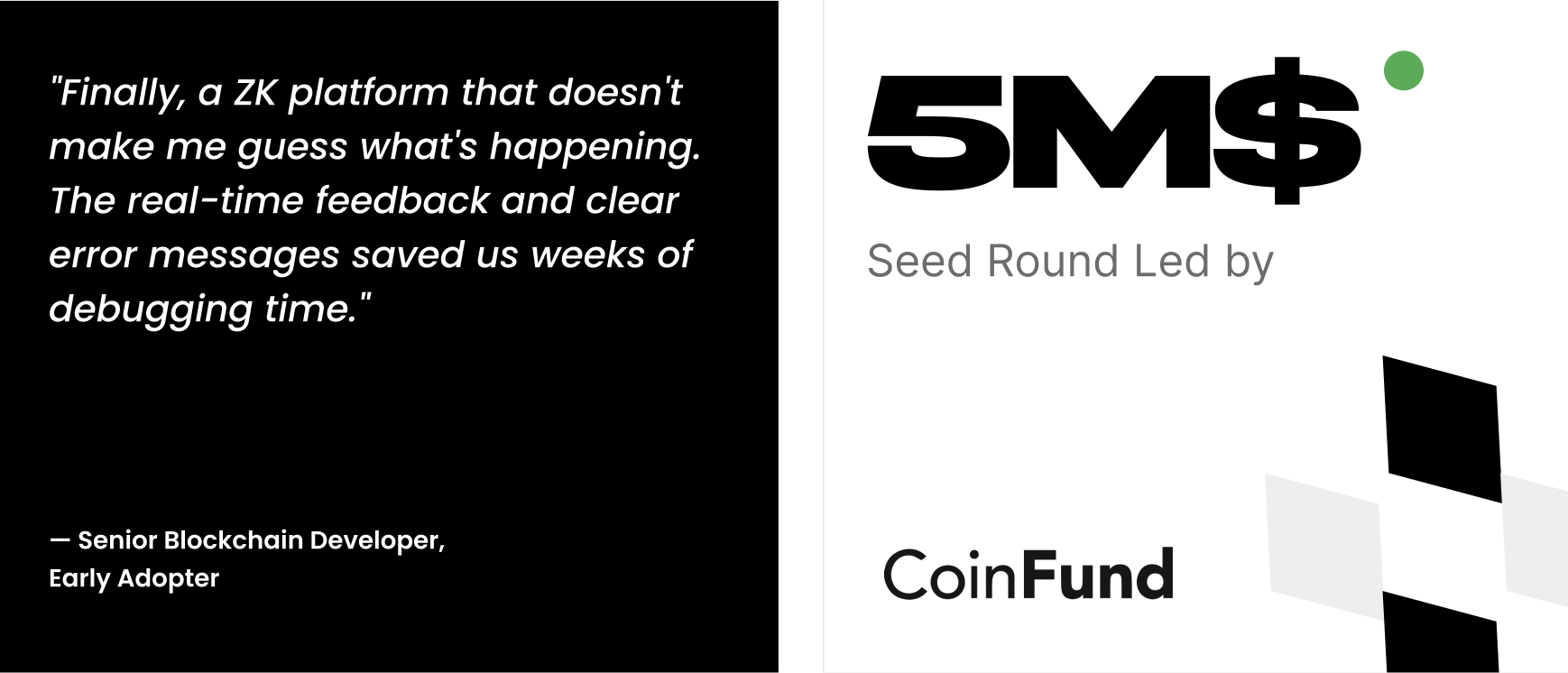

Investors specifically highlighted the platform's user experience design and overall product maturity as key factors in their investment decision. The design work had transformed a powerful but inaccessible technology into a product that felt ready for enterprise adoption and scaled deployment.
The product didn't just work from a technical standpoint—it felt ready for serious production use by development teams who needed reliable infrastructure they could trust with critical applications.
Services Delivered
Our collaboration with Sindri produced a complete product ecosystem that transformed their command-line-only offering into a fully featured platform. The deliverables included a comprehensive dashboard interface that provided real-time visibility into proof generation and infrastructure status.
We developed a complete brand identity that positioned Sindri as a trustworthy infrastructure provider rather than another speculative crypto project. The scalable design system we created continues to power every new feature and product expansion that Sindri launches today.
The developer-first user experience extended across CLI tools, web dashboard, mobile access, and SDK documentation, creating a cohesive experience that respected how developers actually work while making complex zero-knowledge operations more accessible and reliable.
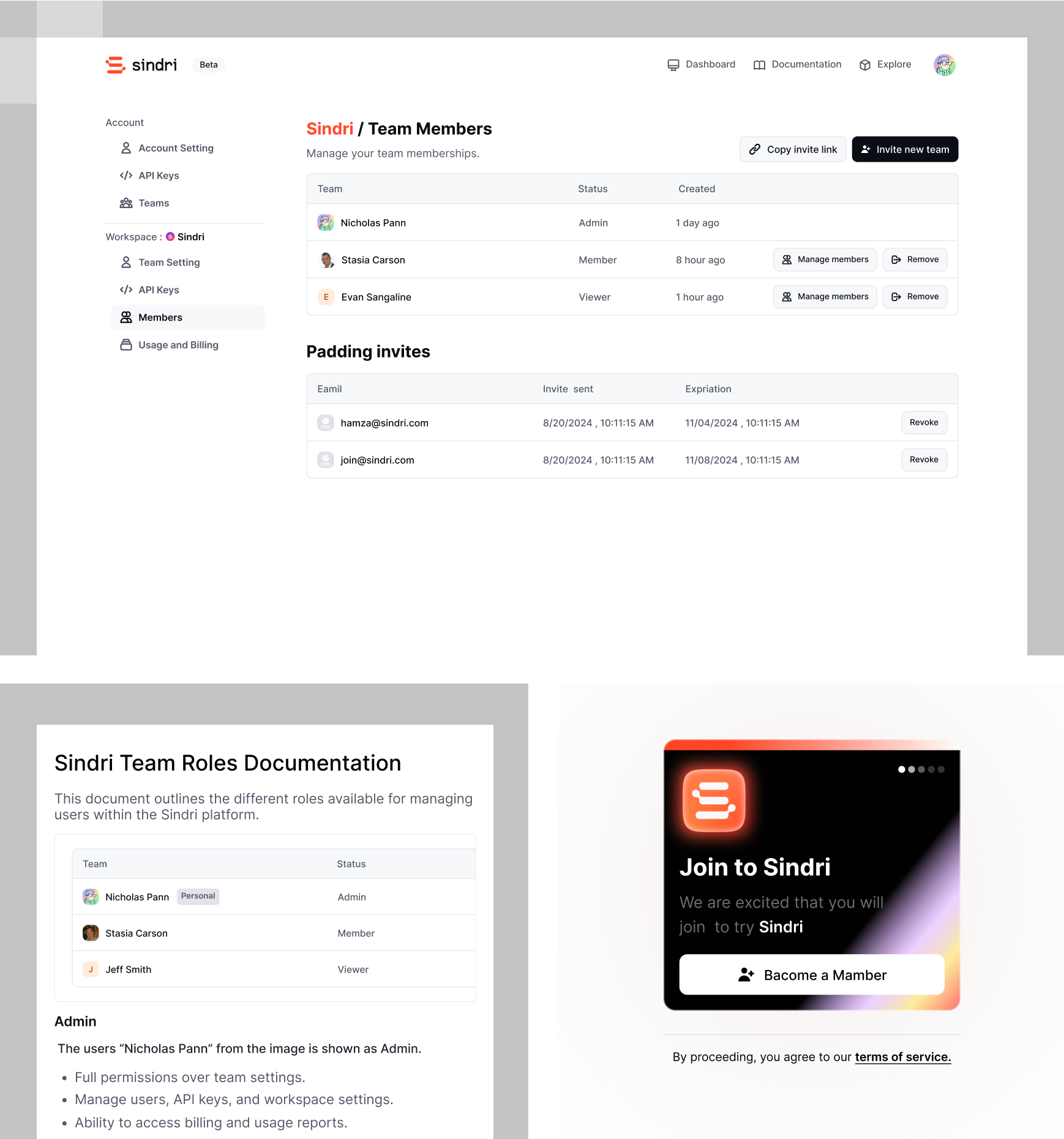
Ready to Build Something Meaningful?
Building something technically ambitious requires more than just functional excellence. The challenge lies in creating an experience that makes users feel confident, informed, and in control. That's what transforms individual users into advocates and experimental products into essential platforms.
The story of Sindri illustrates how thoughtful design can unlock the potential of groundbreaking technology by making it accessible to the developers who need it most. We're proud to have been part of this transformation from promising technology to trusted platform.
